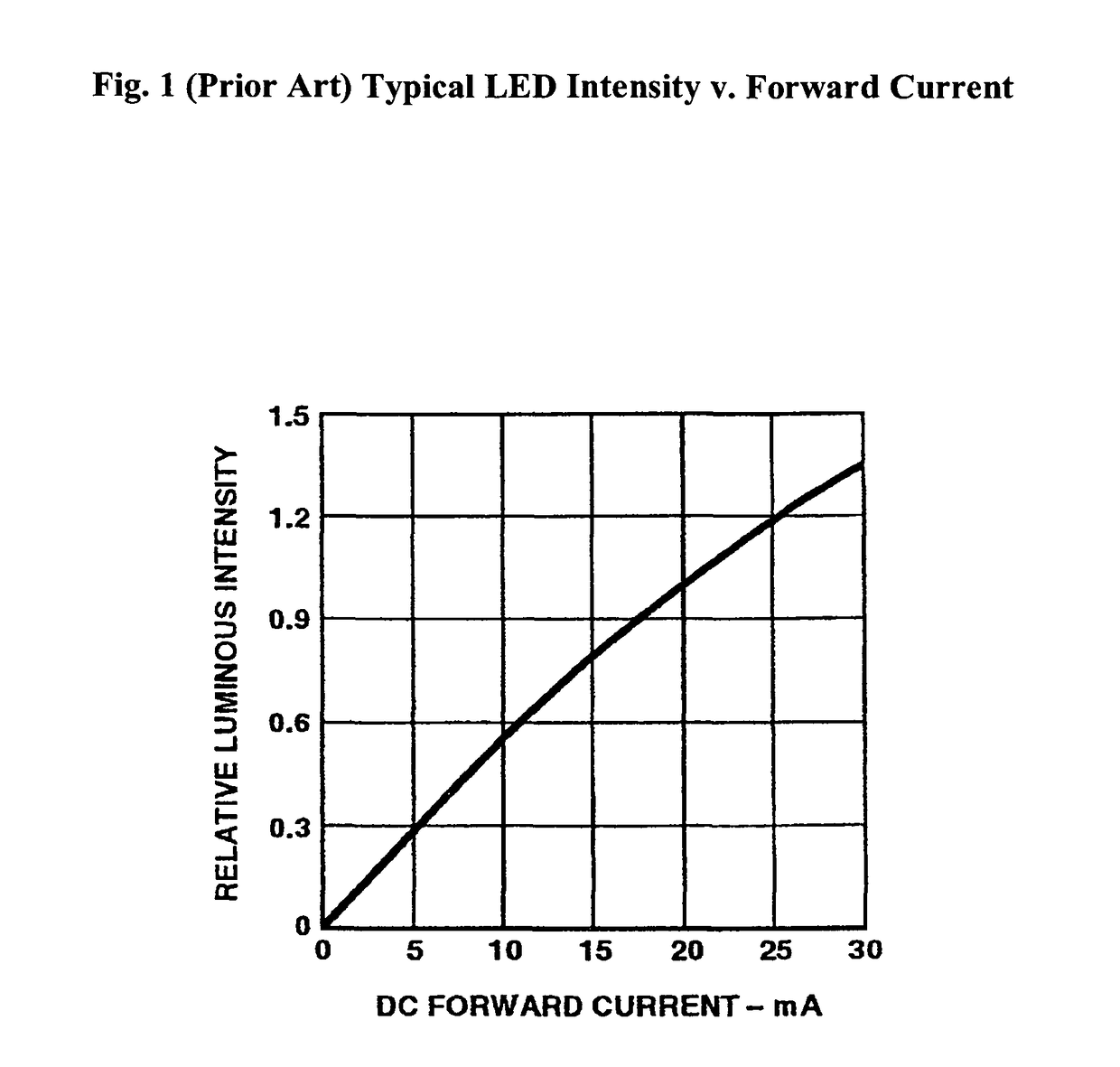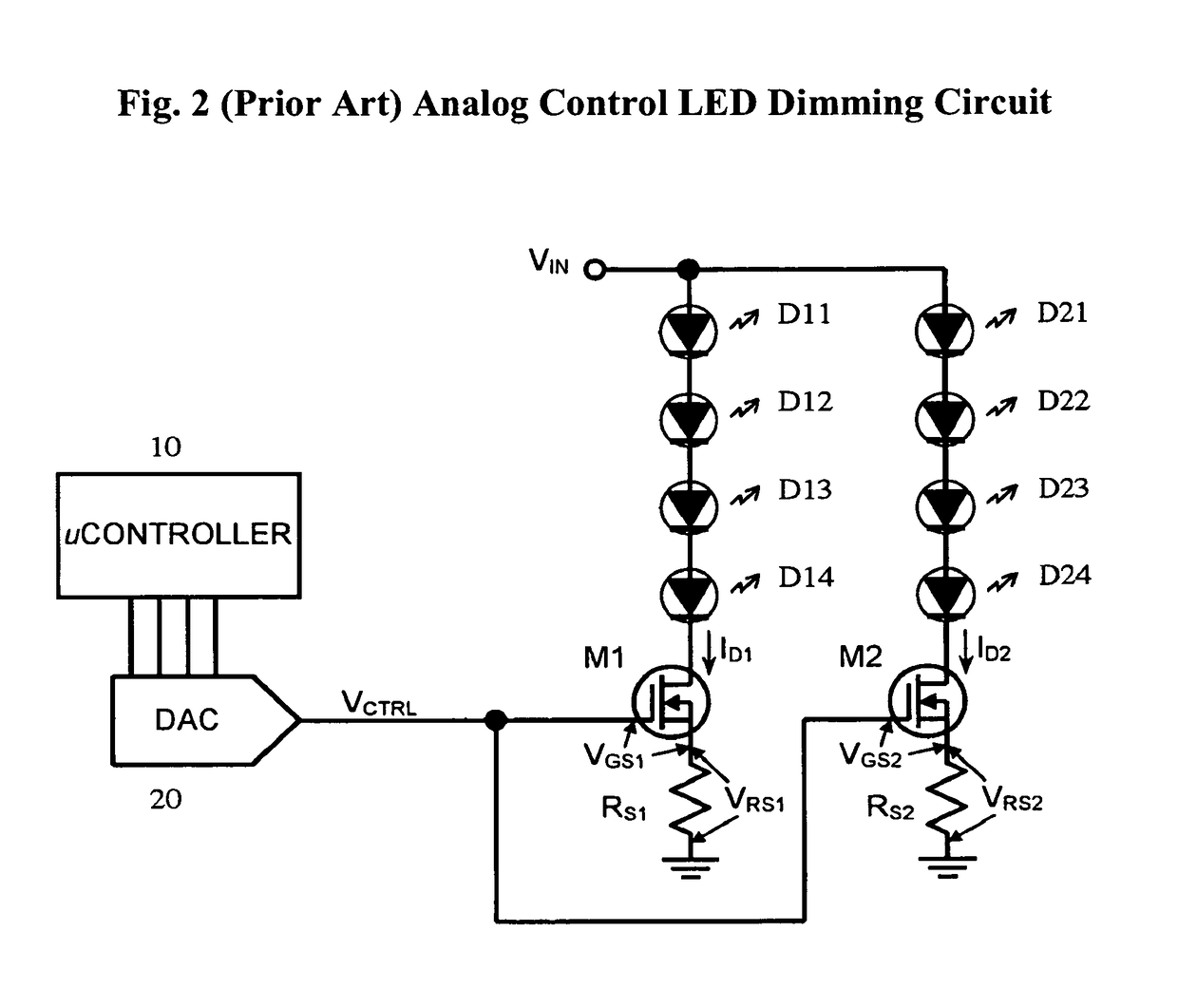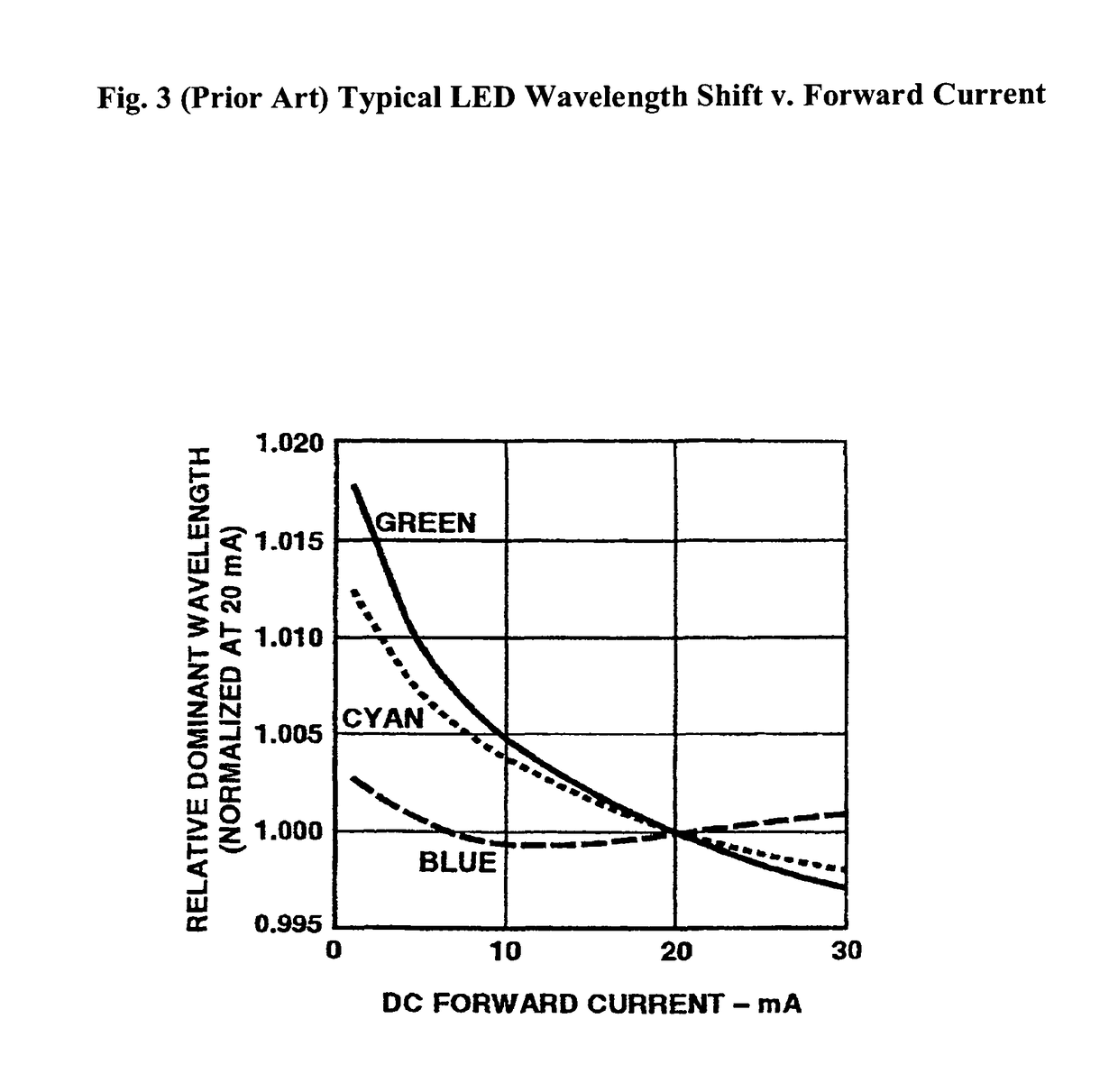Hybrid-control current driver for dimming and color mixing in display and illumination systems
a technology of display and illumination system and hybrid control current, which is applied in the direction of electric variable regulation, process and machine control, instruments, etc., can solve the problems of asymmetric power supply load, short useful life, and faster deformation of forward current levels,
- Summary
- Abstract
- Description
- Claims
- Application Information
AI Technical Summary
Benefits of technology
Problems solved by technology
Method used
Image
Examples
Embodiment Construction
[0032]For the purpose of this discussion, the term “analog current control” will be defined as the use of a control signal input which is continuously variable over a range of voltages to cause a corresponding output signal to deliver a current to a load wherein said output current is continuously variable within a range of output currents. “Digital” or “pulsed current control” will refer to the use of a control signal input which is capable of two logic levels. “1” or “0”. corresponding to two discrete voltage levels to affect the time-average output current which is delivered to a load by causing said output current to be delivered at one discrete level when said input is at the “1” logic level, and to be delivered at a second level (typically, but not necessarily 0) when said input is at the “0” logic level. As discussed in the BACKGROUND section, pulsed current control is typically PWM, but can also be FM or any other modulation technique designed to achieve an output level that...
PUM
 Login to View More
Login to View More Abstract
Description
Claims
Application Information
 Login to View More
Login to View More - R&D
- Intellectual Property
- Life Sciences
- Materials
- Tech Scout
- Unparalleled Data Quality
- Higher Quality Content
- 60% Fewer Hallucinations
Browse by: Latest US Patents, China's latest patents, Technical Efficacy Thesaurus, Application Domain, Technology Topic, Popular Technical Reports.
© 2025 PatSnap. All rights reserved.Legal|Privacy policy|Modern Slavery Act Transparency Statement|Sitemap|About US| Contact US: help@patsnap.com



